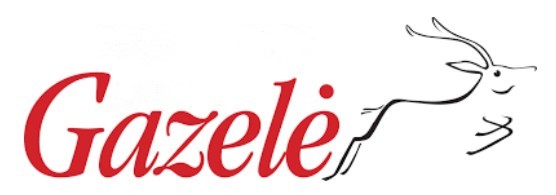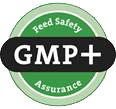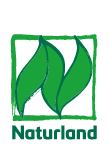- Home
- Seeds
- Fodder grasses and legumes
- SMALL GRAIN LEGUMES
- Persian clover (annual) LASER (coated seeds)
FOR CONSULTATIONS APPLY TO:
Commercial director
Lina Smalskienė
tel. +370 618 02 551
e-mail linak@agrolitpa.lt
Sales manager
Tautvydas Kliučininkas
tel. +370 681 35 093
e-mail tautvydask@agrolitpa.lt
Sales manager
Eglė Petkevičienė
tel. +370 626 95 458
e-mail eglep@agrolitpa.lt
Sales manager
Kotryna Nakrošytė
tel.: +370 601 39 282
e-mail kotryna@agrolitpa.lt
Products
A late, fast-growing and highly productive, large-leaved Persian clover for forage or green manure
- The most productive annual legumes
- Easily established
- Grows quickly and allows for a high first harvest
- With sufficient moisture, multiple harvests can be obtained
- Re-grows well after cutting
- Aftermath is valuable
- Plant – almost erect, bush-shaped
- Plants – up to 75-80 cm tall
- Stems – thick (about 35 mm in diameter), hollow, thin-walled, soft, very sensitive to lodging
- Stems become woody very slowly (low fiber content in the fodder)
- Leaves – trifoliate, about 25 mm long (large, like of Lightning variety)
- Flowering – late
- Maturity – late (about 165 days)
- Resistant to Clover scorch (Kabatiella caulivora)
- Resistance to leaf and stem rust – low
- Tolerant to clover root rot (Phytophthora clandestina)
- Good heat tolerance
- Fairly tolerant to frost and cold, but grows slowly at low temperatures
- Flowers – pink, with a specific odor
- Soft seeds
- Seeds – about 1 mm long, ovoid, multi-coloured (brown, olive, purple)
- 1000 seed weight – 1.25-1.70 g
- Seed yields – 150-300 kg/ha (potential – 1000 kg/ha)
- Fodder – nutritious and very digestible
- Rich in protein, minerals, vitamins
- Crude protein content – 16–24 %
- Fiber content – low
- NDF content – 24-45 %
- Digestibility – 63-78 %
- Used for green fodder and silage or hay production
- Stems are nutritious, but dry slowly
- Transport bales immediately – hay is quite sensitive to rain
- Low isoflavone content – no risk to breeding stock
- Low risk of bloat after feeding
- Companion plants – Italian ryegrass and other annual clovers
- Suitable for short-term pastures
- Suitable for sheep, cattle, dairy cows
- Graze when it reaches 15-20 cm in height, in a rotational manner to a height of 4-5 cm, so that the animal can feed effectively and the pasture can regrow
- Does not tolerate intensive grazing
- Avoid overgrazing, as developing stems are destroyed
- Liked by livestock and wild animals
- Suitable for annual mixtures for fodder
- Particularly suitable for pasture mixtures with Italian ryegrass or oats
- Fixes nitrogen, improves soil
- During the vegetation period, it can accumulate up to 100 kg/ha of biological nitrogen
- A strong root system and easily decomposable aboveground part contribute to soil protection and erosion control, so it is an excellent choice for green manure
- When sowing as a catch/cover crop, sown more densely, fight weeds more strongly, and produce a higher yield of green biomass
- Develops best in a warm and humid climate
- Likes fertile, medium-heavy soils that retain moisture well
- Adapts to a wide variety of soils, except sandy and acidic ones
- Best suited for growing in neutral or slightly alkaline soils (pHCaCl2 5.5-8.5)
- Tolerates clay soils
- Tolerates partially soggy soils
- Seed inoculation is recommended
- Seeds germinate at a temperature of 6-8 °C
- Required rainfall during the growing season – 450-500 mm (450 mm+ and more) (elsewhere – 600-800 mm)
- Produces a lot of nectar, very liked by bees
- Dry matter yield of the first cut – 1.840 t/ha
- Dry matter yield of the second cut – 0.994 t/ha
*Based on 2009 research data in Australia. Source: Pasture/pasture trials. Southern Farming Systems | 2009 Growing Season Trial Results, p. 196-197
The advantages of coated seeds:
- Allows more precisely to incorporate small size seeds with low sowing rate
- Protect seed from mechanic stress caused by sowing machines
- Protect seed from birds and insects - in fact coating components are not toxic but they don’t even attract them
- The extra-resistance of the coating avoids dust leakage and dust accumulation in the sowing machine
- Have less hard-seed content which means higher immediate germination percentage on the establishment of crop
The varietal parameters may differ from those indicated here when the testing circumstances differ from quondam
Recommended sowing rate: 12-15 kg/ha
Recommended sowing rate when growing for green manure: 15-20 kg/ha
Keravos sreet. 17, Kerava,
LT-38 131 Panevėžys district, LITHUANIA
Enterprise's code 168598128
VAT code LT685981219
Tel. +370 615 11 315
E. mail info@agrolitpa.lt




.JPG)


